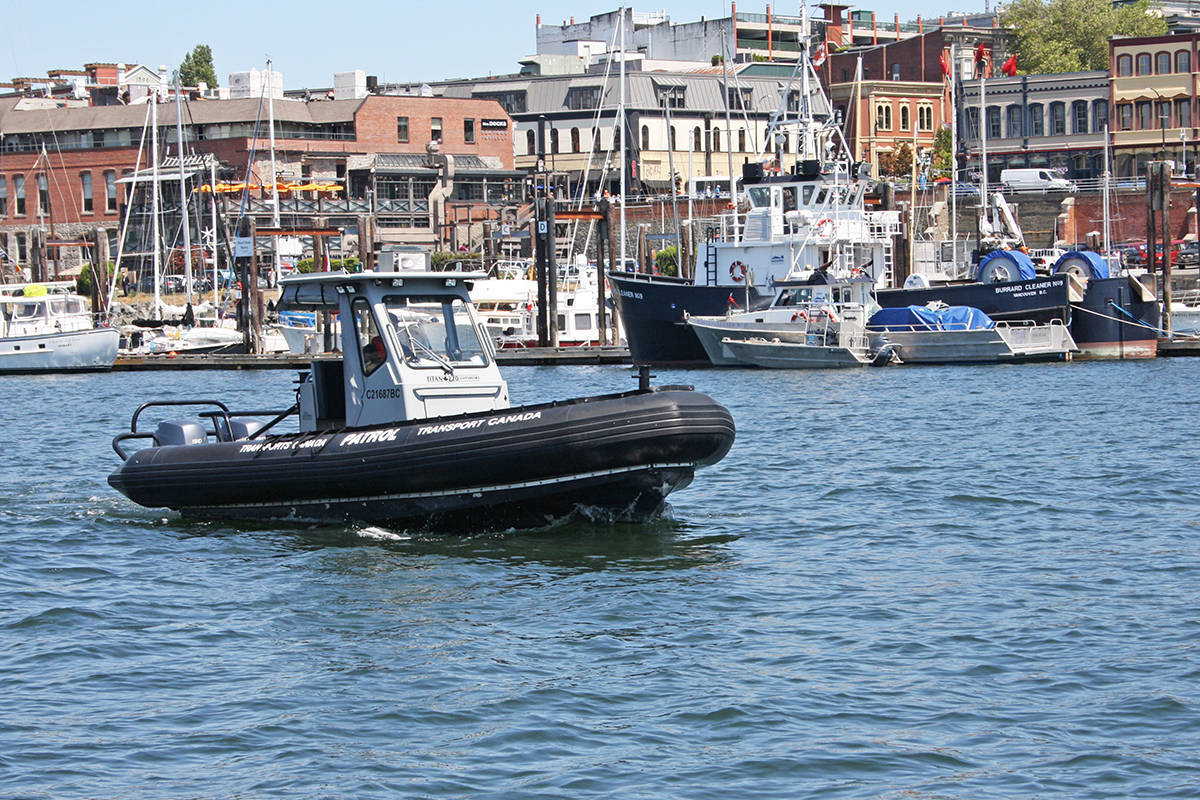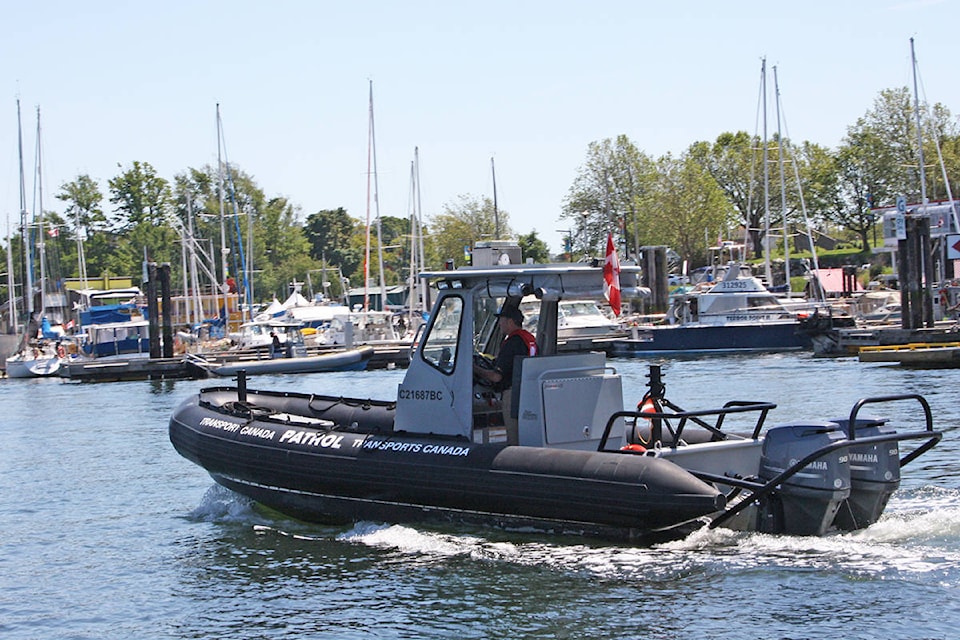Tim Collins/Victoria News
As the harbour patrol boat makes its way from its berth at Fisherman’s Wharf into the Inner Harbour, acting harbour master Alois Schonenberger’s head is on a swivel. He’s constantly looking to all sides of his craft to monitor what’s going on around him.
It’s a necessary habit for Schonenberger and his staff, as evidenced by the traffic he’s required to navigate as he makes his way on patrol. Ahead, the 138-foot Pacific Grace, one of Victoria’s resident tall-ships, is setting out while two harbour taxis ply their way through the same area. A group of three kayakers paddle along the shoreline, seemingly oblivious to the large yacht coming up behind the harbour patrol boat.
Meanwhile, a float plane taxis to its take-off position as another, having just landed on the waterway, makes its way to the Harbour Air dock. Another large boat shoves off and eases away from its Inner Harbour mooring.
“It’s actually a pretty quiet day on the harbour,” observes Schonenberger. “On the weekends and during special summer events we can get a lot busier, so it gets a bit more hectic out here. Bad weather can also make things a bit tougher.”
The harbour patrol is a force of two during the winter, expanding to seven during the busy summer months when five seasonal workers are brought on to man three 22-foot rigid inflatables. Operating under the jurisdiction of Transport Canada, the harbour master and his patrols are charged with the safe and effective operation of the outer, middle and inner harbours; a responsibility they undertake with patience worthy of a saint.
The Port of Victoria Traffic Scheme, a road map and guide for the multitude of traffic entering and leaving the harbour, has made the task slightly easier. But managing a waterway with marine traffic that ranges from kayaks to large ferries, where large yachts, barges and sometimes inexperienced operators of small craft interact, is frequently a challenge.
Added to the mix is the fact those same waters are home to the Victoria Harbour Water Airport, where about 30,000 takeoffs and landings happen annually.
Barry Hobbis, vice-president of operations for Victoria Harbour Ferries, has nothing but praise for the harbour patrol.
“We have a very strong relationship, as do all the operators on the harbour. We have to, really. Without co-operation and the monthly meetings we have with the harbour patrol to deal with issues, it would be chaos out there,” he says.
Occurrences on the water range from exhausted or confused kayakers or paddle boarders who need rescuing – harbour ferries pull about a half-dozen a year out of the water, Hobbis adds – to inexperienced or inebriated boaters unfamiliar with the traffic rules, sometimes drifting in behind the M.V. Coho ferry, oblivious to the potential danger.
Schonenberger takes it all in stride, as does his staff. He admits the air traffic complicates his job, likening it to a small airfield on land where people on bikes, cars and RV’s all have access to the runway. So long as everyone follows the rules, he says, it’s a workable situation.
“At the end of the day, the regular operators out here, the seaplane operators, the harbour taxis, the ferries, the kayak rental operations and even the regular boaters, generally work together pretty well,” he says. “Our job is mostly to educate and inform, and react when things go wrong. Still, you can see things operate really well.”
He glances over to where a small boat is racing across the seaplane runway at about twice the harbour’s 5 km/h speed limit. They spot the harbour patrol boat and immediately reduce their speed.
Schonenberger simply smiles and gives them a wave.
editor@vicnews.com




